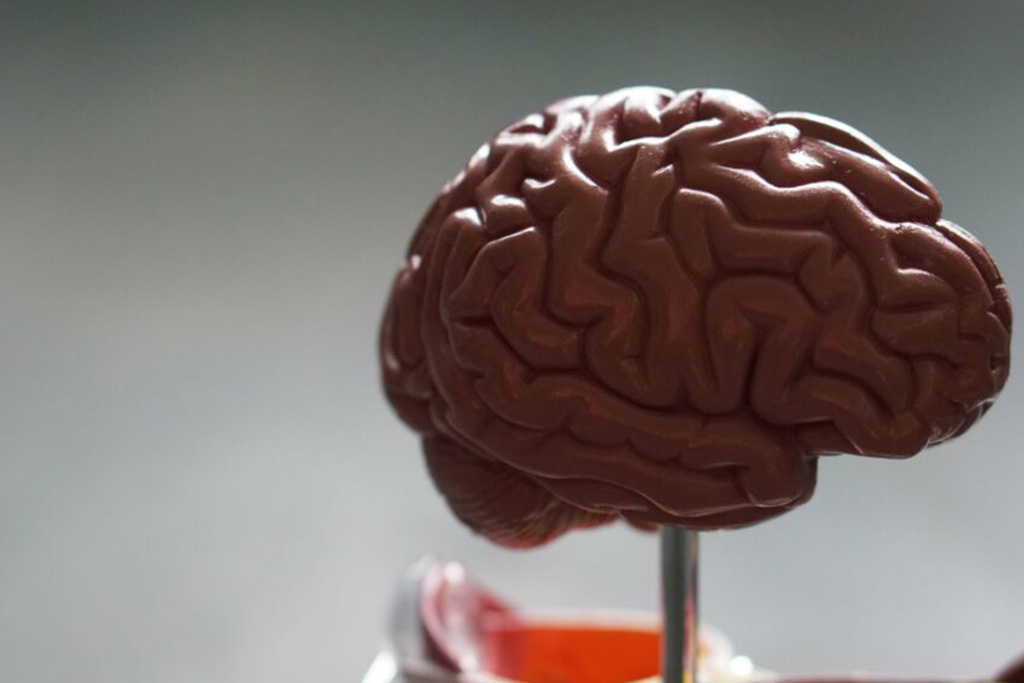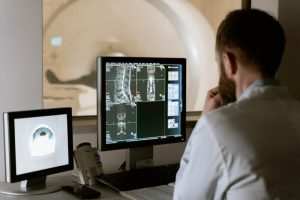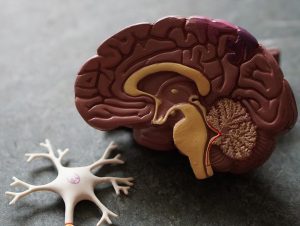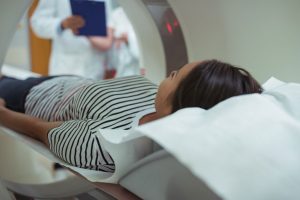Diffusion Tensor Imaging
Diffusion tensor imaging is an MRI-based technique that helps neuroradiologists discover the orientation and location of the white matter portions of the living brain. The method works by tracking the water diffusion rate of brain tissues. It is a non-invasive testing method that has a high level of sensitivity.
It uses existing MRI technology, requiring no contrast agents, chemical tracers, or new equipment. This means that it is easily tolerated by patients with a wide variety of problems in the brain.
The basic concept behind diffusion tensor imaging is that water molecules behave and diffuse differently between various brain tissues depending on their structure and integrity. Different types of tissue conduct water in different ways due to the presence of cell membranes and other factors.
Understanding diffusion tensor imaging requires an examination of how water behaves in brain tissues. Water diffusion in the brain’s white matter is anisotropic or directionally dependent. Water in gray matter is less anisotropic, and cerebrospinal fluid is isotropic and can flow in all directions. This enables neuroradiologists to accurately map white matter areas and plan surgeries and other procedures.
Diffusion tensor imaging is becoming popular as a means of studying white matter architecture in living people. It is a highly specialized form of analysis since it requires a deep knowledge of imaging, MRI protocols, the complexity of neuroanatomy, and the limitations of the technique.
How is Diffusion Tensor Imaging Measured?
To measure the diffusion of brain fluids using MRI, a magnetic field gradient is used to create an image that targets diffusion in a particular direction. To perform the task, multiple directions of diffusion are examined. This can create a three-dimensional diffusion model (the tensor) and estimate fluid flow in the brain. Areas where white matter fibers are parallel to the direction of the gradient will appear dark on the weighted MRI image for that direction. A minimum of six diffusion-weighted images is needed to calculate the diffusion tensor.
Fiber Tractography
High-definition fiber tractography allows neuroradiologists and neurosurgeons to complete a comprehensive pre-surgical evaluation of the structure of the brain’s fiber tracts or white matter pathways.
Fiber tractography is the only technique that can reconstruct the anatomical connectivity of the living brain without using invasive techniques. The information used for fiber tractography comes directly from diffusion tensor imaging. Using fiber tractography, neuroradiologists can reconstruct a model of the human brain that shows all of its white matter tracts.
Fiber tractography can be a huge help in planning surgeries for brain tumors and other types of lesions since brain surgery aims to disrupt as little of the brain’s structure as possible. When patients’ brains are studied using fiber tractography, the structure of brain fibers and the cranial nerves is used to help determine the best surgical trajectory into the region where surgery is necessary. This makes brain surgeries safer and makes it less likely that a repeat surgery will be necessary to remove the targeted lesion.
New Research Areas
One new area of research in fiber tractography is examining patients with Huntington’s disease and ALS. Researchers are attempting to discover quantifiable measures to track the integrity of the brain’s white matter and correlate them with the speed of disease progression. Having set clinical measures for the progression of these debilitating diseases will help neurologists plan their best course of action in treating patients.
A new area of research in diffusion tensor imaging is examining the brains of patients with Down syndrome. This type of analysis reveals hypoplasia or a lack of cells in the cerebellum. Other recent research studies are being done on multiple sclerosis, autism, and spinal cord gray matter loss.
Using New Techniques to Help Patients with Debilitating Disorders
Diffusion tensor imaging and fiber tractography can be instrumental in making sure that patients with brain lesions or other abnormalities receive the safest treatment possible. This can help them avoid serious side effects from their brain surgeries like loss of function.
Neuroradiologists who are conversant with this technique can be a valuable member of a brain cancer patient’s care team and can help their neurosurgeons better understand the brain’s structure. Dr. Jose Pizarro believes that the uses of diffusion tensor imaging and fiber tractography will only grow as further scientific research is completed.
See Now: Facebook will use AI to detect users with suicidal thoughts and prevent suicide









